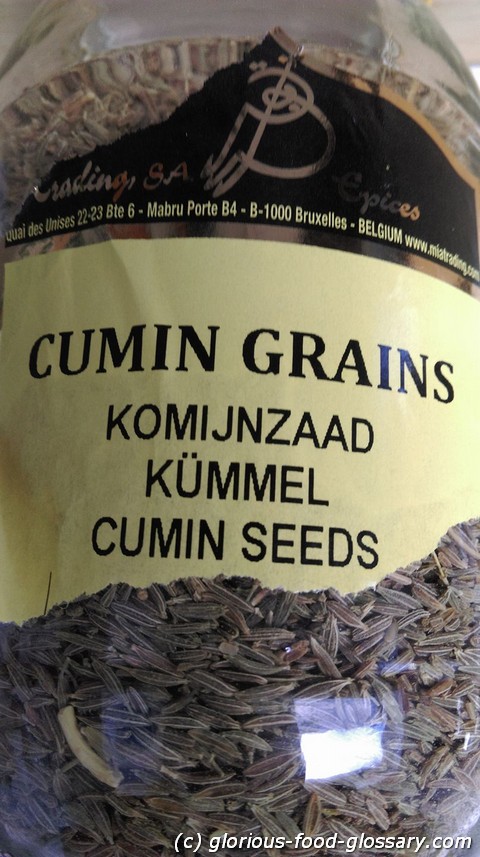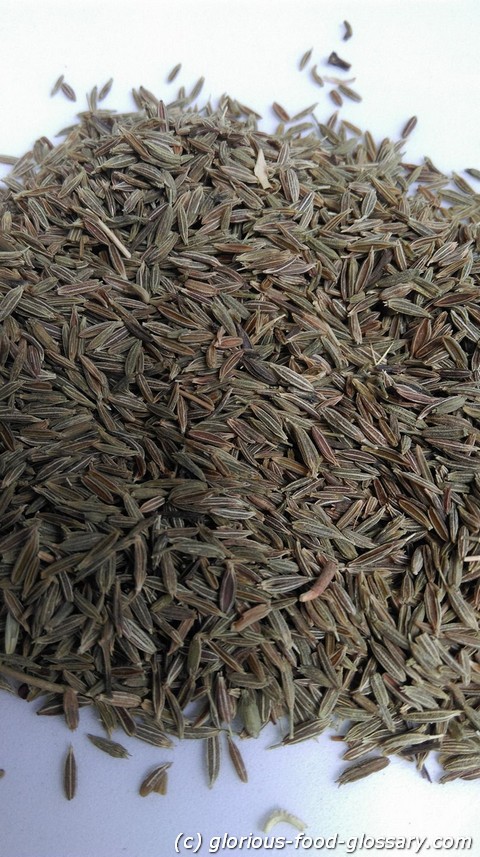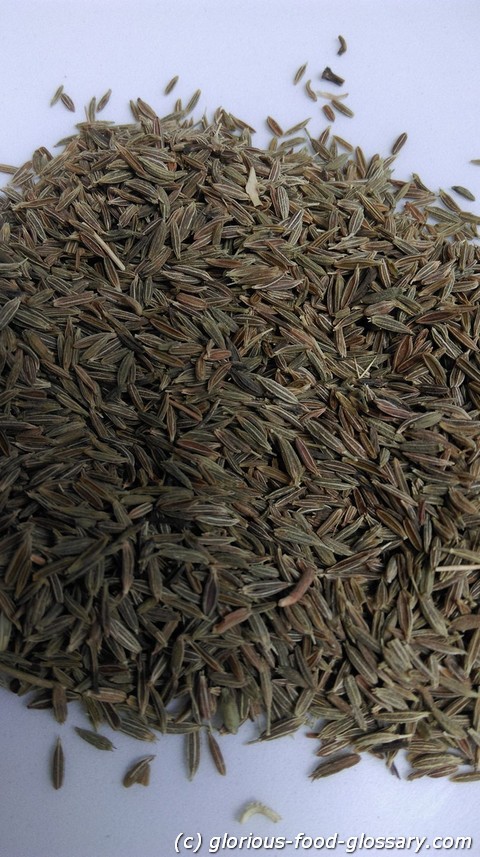Deutsch: Kreuzkümmel / Indian: Jeerakam
Cumin is a flowering plant in the family Apiaceae, native from the east Mediterranean to India. Its seeds (each one contained within a fruit, which is dried) are used in the cuisines of many different cultures, in both whole and ground form.

In the food context, cumin refers to a spice made from the seeds of the Cuminum cyminum plant. It has a warm, earthy, and slightly bitter flavor with a distinctive aroma. Cumin is widely used in various culinary preparations, particularly in Middle Eastern, Indian, and Mexican cuisine. Here are some examples of how cumin is used in cooking:
-
Hummus: A Middle Eastern dip made with chickpeas, tahini, olive oil, garlic, lemon juice, and cumin.
-
Chili: A spicy stew made with ground beef, beans, tomatoes, and cumin. It's a popular dish in Mexican and Tex-Mex cuisine.
-
Curry: A flavorful dish made with vegetables, meat, or seafood, cooked in a sauce made with a blend of spices including cumin, turmeric, coriander, and chili powder.
-
Tacos: A Mexican dish made with seasoned meat, onions, and cumin. Tacos are typically served in a soft or hard tortilla shell and topped with various condiments such as salsa, cheese, and lettuce.
-
Falafel: A Middle Eastern dish made with ground chickpeas, parsley, garlic, cumin, and other spices. Falafel is typically fried and served in a pita bread with hummus and vegetables.
-
Chicken Shawarma: A Middle Eastern dish made with marinated and grilled chicken, wrapped in pita bread with vegetables and a yogurt-based sauce flavored with cumin.
Other spices that have a similar flavor to cumin include:
-
Coriander: A spice made from the seeds of the Coriandrum sativum plant. It has a slightly sweet, citrusy flavor that is often used in Middle Eastern and Indian cuisine.
-
Fennel Seed: A spice made from the seeds of the Foeniculum vulgare plant. It has a sweet, licorice-like flavor that is often used in Italian and Mediterranean cuisine.
-
Caraway Seed: A spice made from the seeds of the Carum carvi plant. It has a warm, earthy flavor that is often used in German and Eastern European cuisine.
-
Anise Seed: A spice made from the seeds of the Pimpinella anisum plant. It has a sweet, licorice-like flavor that is often used in Mediterranean and Middle Eastern cuisine.
-
Mustard Seed: A spice made from the seeds of the mustard plant. It has a sharp, pungent flavor that is often used in Indian and European cuisine.
These spices can be used interchangeably in some recipes that call for cumin, but they may not give the exact same taste and aroma that cumin provides.



